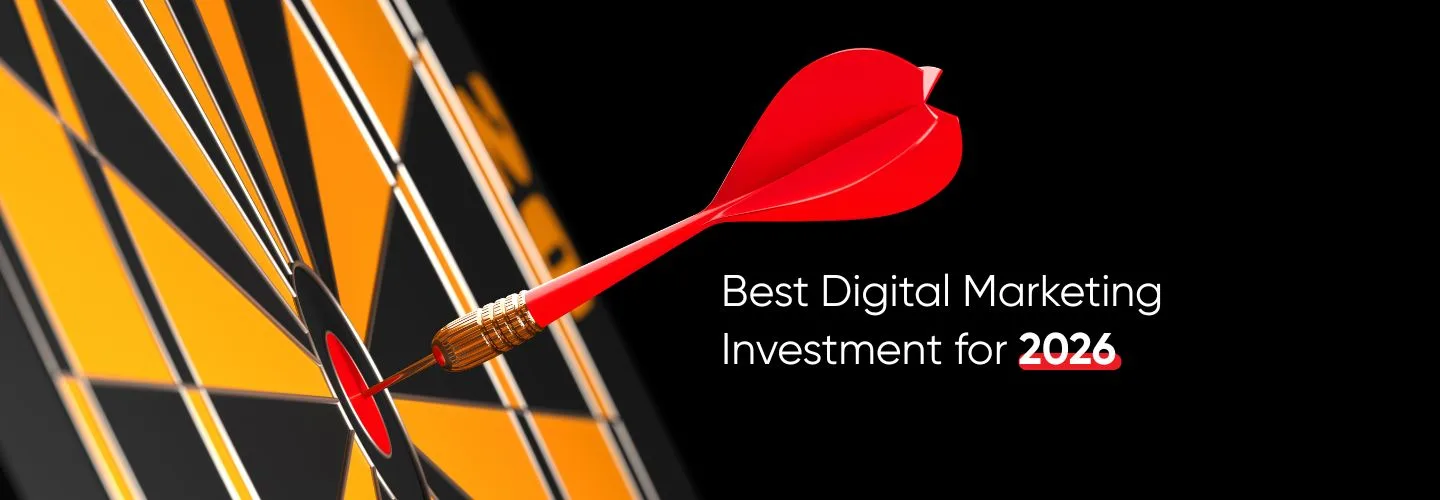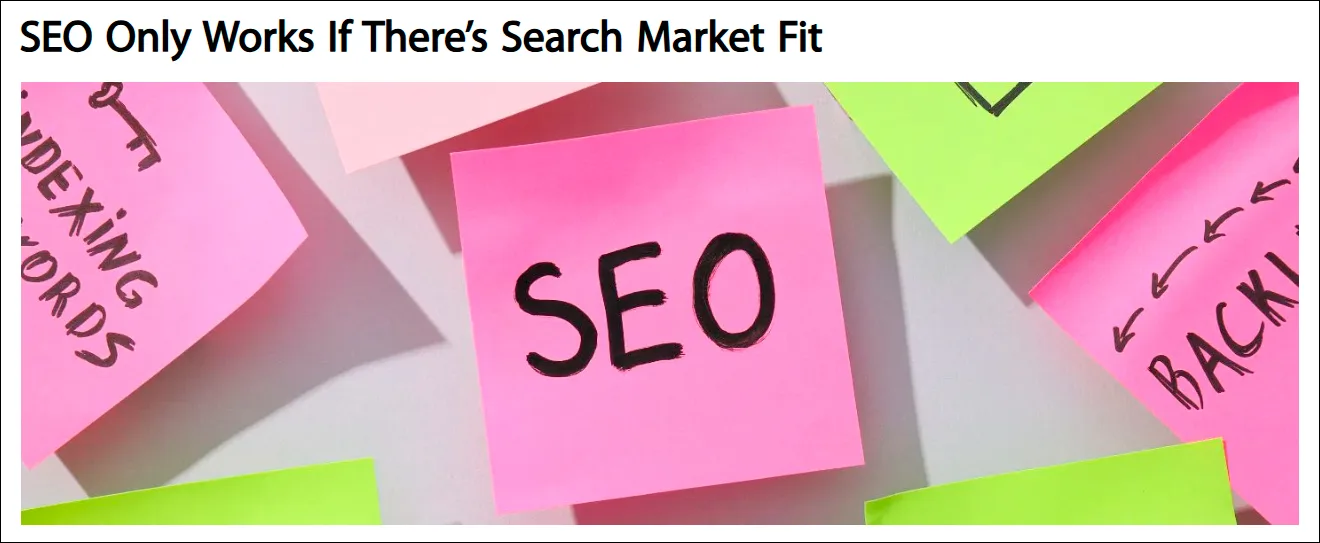The Best Digital Marketing Investment for 2026 (Guide for Founders & Business Owners)

If you can make only one digital marketing investment in 2026, make it search-led content systems powered by AI-assisted human expertise. Not random content. Not AI spam.
A measurable, multi-channel content engine that compounds rankings, demand, brand authority, and conversions across the year, even when ad costs rise and algorithms shift.
What Most Businesses Get Wrong About Digital Marketing in 2026
Most founders still chase tactics rather than systems. They invest in ads when leads dry up, SEO when traffic drops, or social media when competitors post more.
The contradiction: everyone wants predictable growth ![]() , but they build scattered activities instead of a predictable marketing asset.
, but they build scattered activities instead of a predictable marketing asset.
This is why the brands that scale in 2026 will all have one thing in common: They rely on a search-led content system, not platform-dependent hacks.
The Core Insight: 2026 Belongs to Search-Led Content Systems
Here’s why:
1. Search demand is increasing, but traditional SEO isn’t enough.
Users now search with:
- AI assistants
- Conversational queries
- Multi-step intent
- Problem-first phrasing
![]() Winning 2026 = owning these search journeys with deep, helpful content.
Winning 2026 = owning these search journeys with deep, helpful content.
We have seen this echoed in recent Reddit discussions. On r/seogrowth, a marketer noted that “Google is slowly shifting towards being an answer engine”, meaning traditional tactics alone won’t cut it. It’s about owning the journey of search intent, not just ranking for keywords.
To understand why most SEO efforts fail today, you can read our guide: ![]()
2. Ads will become 25-40% more expensive (year-over-year trend).
With rising CAC across Meta, Google, and LinkedIn, content is the only asset that lowers CAC month after month.
3. AI creates floods of content, but authority becomes scarce.
Google’s latest updates reward:
- Experience
- Depth
- Accuracy
- Real examples
- Trust signals
One Reddit contributor on r/DigitalMarketingHack summarized it perfectly:
Ranking #1 Won’t Save You in 2025: The SEO Shift You Need to Know
byu/GPTBuilderPro inDigitalMarketingHack
Thin or mass AI content will die. Credible, search-led content will thrive.
4. Content is the only investment that compounds.
One strong piece can bring traffic for months
One cluster can rank for hundreds of queries.
One library can become your brand moat.
The 2026 Digital Growth Framework
Step 1: Capture search demand (SEO + search intent mapping)
Find the exact questions your buyers ask, not broad keywords, but precise, journey-based search patterns.
Step 2: Build topical authority (clusters + hubs)
Create content around problems, comparisons, alternatives, and decision helpers.
Stop writing blogs. Start building ecosystems.
Step 3: Add expertise (human-powered differentiation)
Use your founder knowledge, client scenarios, and real data to beat competitors who publish generic content.
Step 4: Distribute everywhere (multichannel reuse)
One content cluster> SEO> LinkedIn> email> reels> sales enablement> ads.
The content system multiplies itself.
Step 5: Measure like a CFO (not a marketer)
Track:
- Revenue from search
- Organic pipeline
- Content-assisted conversions
- CAC decline
- Topic-level ROI
That’s how you prove content isn’t a cost, it’s an asset.
Why This System Outperforms Other Digital Activities in 2026
| Digital Activity | Lifespan | Cost Over Time | ROI Reliability | Compounding Value | Platform Dependency |
|---|---|---|---|---|---|
| Search-Led Content System | 12-36 months | Decreases | High | Strong | Low |
| Paid Ads | 24-72 hours | Increases | Medium | None | Very High |
| Social Media Posts | 24-72 hours | Stable | Low/Medium | None | High |
| Short Video | 7-14 days | Stable | Medium | Low | High |
| Email Marketing | 7-30 days | Low | High | Medium | Medium |
One Reddit discussion on r/SaaS recently noted that ranking positions stayed the same, but clicks dropped 30%, as AI overviews answered queries before users reached the page. This is a clear signal: content needs depth, context, and structure to persist in an AI-first search environment.
How a Founder Turned Content Into a Growth Engine

A SaaS founder we worked with was stuck in a familiar loop: rising CAC, inconsistent leads, and content that didn’t convert. Instead of producing more blogs, we built a search-led content system tied to how their buyers actually searched.
Here’s what the system included:
- Comparison-intent content (“Tool A vs Tool B”, “Best X for Y users”)
- Alternative pages that captured high-intent traffic during switching decisions
- Problem-led explainers answering “why X isn’t working.”
- Buying guides for users close to choosing a solution
- FAQ clusters aligned with AI Overviews and long-tail queries
Within 7 months, the outcomes looked like this (directionally, not inflated):
- 4.3× increase in organic pipeline volume
- 38% reduction in customer acquisition cost
- 68% of new demo calls attributed to search-led content
- Their sales team reported “warmer, more educated leads.”
No ads. No hacks. Just a structured search system anchored around how their customers think, ask, compare, and decide.
Key Takeaways for Founders
- SEO isn’t dead; shallow content is. Deep, AI-aware, expert-driven content persists.
- Build systems, not tactics. Quick wins rarely compound.
- Quality over quantity: 6-12 strong, strategic pieces outperform dozens of filler blogs.
- Measure the right KPIs: revenue from search, conversions, CAC, pipeline growth, not vanity metrics.
Share What You are Building | Start With Fit, Not Promises
If you are a founder deciding where to put your marketing money in 2026, invest in what compounds.
Invest in what lowers your CAC.
Invest in what aligns with how buyers search, compare, and decide.
Build a search-led content system; it will be your most reliable engine for growth.
And if you want to see whether you and us are actually the right fit to work together, fill out this short form: https://tally.so/r/3EGEd4![]()
This form helps us understand:
- What you are building,
- What’s not working in your marketing right now?
- What you expect from a team like ours,
- Your comfort budget
- and your mindset toward long-term growth.
We only move forward when both sides feel the fit is right.
If it is, great.
If it isn’t, no pressure, no hard sell. ![]()
FAQs
Then a content system matters even more. You don’t beat competitors with ads, you beat them with deeper, more helpful, more authoritative content.
The old version (keyword stuffing, backlink chasing) is dead.
The new version (intent, expertise, authority) is stronger than ever. Think of it as moving from paper maps to Google Maps, still navigation, just way smarter.
No, but AI can accelerate research, drafting, and structuring, but it can’t replace your experience or point of view.
If you remove the human part, everything starts sounding the same, and that’s exactly what Google is punishing right now.
Quality > quantity. 6-12 strong, strategic pieces outperform 30 filler blogs. One great article can work for months; one bad one won’t work even for a day.
Jumping from tactic to tactic without building a system that compounds. It’s like putting small amounts of money into random stocks and expecting stable returns, without a consistent investment plan; nothing compounds.
You will usually see signs of life in 60-90 days, but the real compounding starts around months 4-6.
It’s like investing, boring at first, exciting later.
Not really. A small team of experts with clarity will outperform a large team doing scattered work.
One strong SEO strategist, a skilled writer, and a sharp editor can outdo an entire content factory.
Once you map search intent and real customer questions, the content plan basically writes itself. You don’t need to brainstorm for hours; you just need clarity on what your buyers are already looking for.
When you align content with demand, topics stop feeling like “ideas” and start looking like obvious opportunities.



